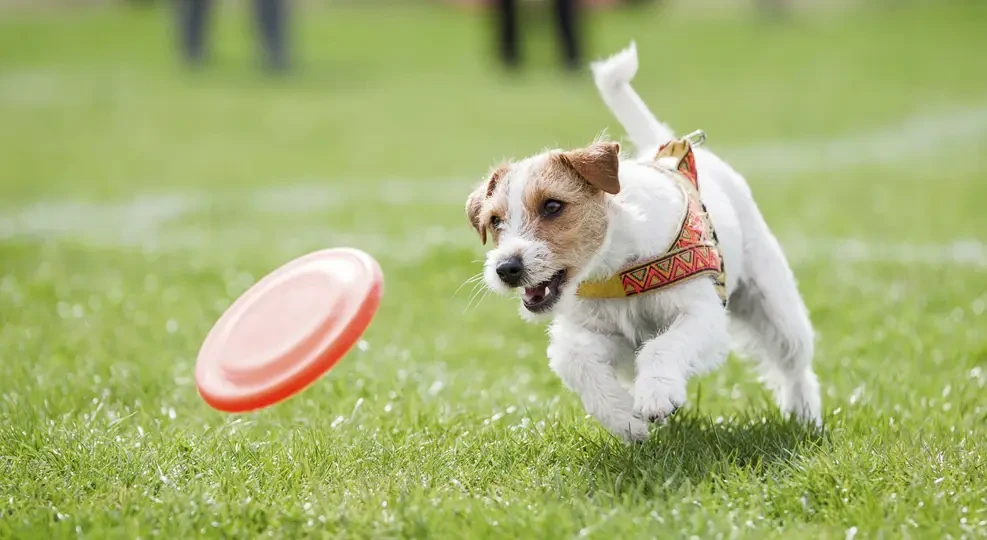News >
Enrichment and Training: Why You Should be Adding Enrichment to Help Get Through Training

As dog lovers, we all know just how important training is for a young pup. Even mature dogs can benefit from running through a routine or two! But, beyond just behaviour and socialisation, the really important driver behind dog training is actually about mental wellness for your pet. Enrichment is the magic word for canine health and happiness, and if it’s ignored, no amount of training and discipline will keep your dog from acting out.
So, what does enrichment look like for your dog? And how can you make enrichment training so, so, much easier? Let’s talk
about it!
Enrichment is the Key to Happiness
When you hear the word ‘enrichment’, you should think ‘stimulation’. You’ve likely seen enrichment toys and
puzzle feeders around the place, but the field of dog enrichment is actually a little broader than just finding ways to keep them busy for a
time.
Enrichment can - and should - include all aspects of a healthy dog’s life. That includes mental stimulation, physical exercise, social activity, and, importantly, sensory enrichment. Dogs do well with a strong routine - walks every day, food on schedule, regular social visits, and predictable bedtimes. But it’s important not to let the routine get in the way of new, exciting, stimulating experiences. Mixing enrichment in with routine is quite easy - as we said, puzzle bowls make meal times into an exciting challenge, and you can give your dog treats with a cheeky toy that makes them work for it. Break up a snack stick, hide it in a rubber chew toy, and your dog will have his own detective day finding those tasty scents - it’s perfect for their enrichment!
So finding the right level of stimulation for your dog is as simple as adding some variation to their routine, right? But we did promise
to tell you about enrichment training, so let’s get to that.
Enrichment and Dog Training
Training is incredibly important for any dog, whether you take regimented puppy school lessons which you continue at home or it’s more
home-schooled - learning to sit, stay, follow commands, and the usual tricks. Either way works, the attention in a structured environment is
extremely helpful to any young pup, and is even good as they grow to wisened old dogs! But how can we use enrichment to amplify those
benefits? Well, in some ways, you probably already are! But it helps to understand exactly what it looks like.
Including more complicated tricks to test your dog can be the first step toward more stimulating training. A common method is to turn basic command reinforcement into a game of hide and seek. Let your dog exercise their olfactory senses by hiding from them and let them use their excellent sniffing skills to hunt you down. Rewarding them with an extra-pungent treat, like bits of a dried chicken fillet can help a younger, less experienced dog find you - while also providing some extra motivation. Other games for training might include;
- Hot & Cold: Hide some snacks (like eggs on Easter) around your yard and coach them to find them by changing the tone of your voice as they get nearer. It’s great for stimulating their natural instinct to hunt around, while also familiarising them with your voice.
-
Agility/Obstacle Course: Let your dog imitate the pros in dog shows with a fun, homemade agility course. You can make
almost any obstacle into a fun game, and even in an empty park, try making the obstacles with your body - hoops with your arms, crouching
down for jumps etc.
- Fetch (with treats!): Everyone knows fetch, but not every dog is very good at it! Chasing the ball is a matter of instinct for most dogs, but returning it for another go-around is a matter of discipline. Try offering a small treat with every return to establish a pattern of behaviour - you’d be surprised how quick of a learner a motivated student can be.
The Right Treats for the Situation
Games a great for enrichment, but nothing is more exciting for a dog than the perfect treat. Using treats effectively during enrichment
training is slightly more involved than you might initially think; it’s not simply finding one thing your dog enjoys and running with
it.
The key to enrichment - novelty - also applies to treat and reward giving. The health of your dog is also a concern when you’re talking about snacks on a schedule. So, the best stance to take is in an old saying - “variety is the spice of life”. Provide a range of interesting, exciting and tasty snacks to your pet, and try to line them up with the right games too. A scent based game should have a rich-smelling snack, like a bully stick at the end of a long scavenger hunt. A super stick makes for a great reward for repeatable tasks, and so on.
Keep in mind - healthy snacks will keep your dog looking and feeling their best while they’re spending valuable, enriching time with their favourite human!














